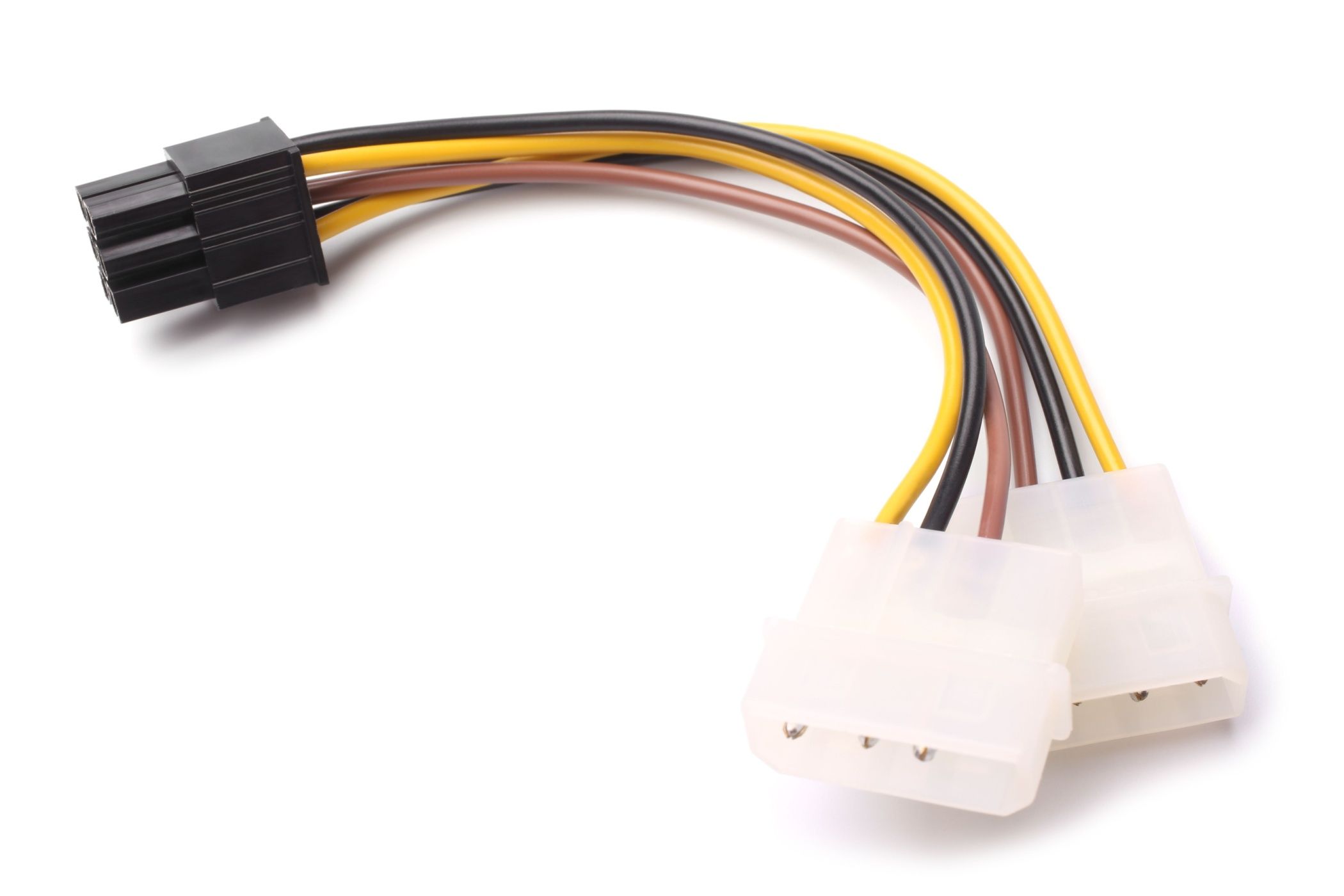
Nearing Its End: The Iconic 60-Year Legacy of the 4-Pin Molex Connector

Nearing Its End: The Iconic 60-Year Legacy of the 4-Pin Molex Connector
Key Takeaways
- The 4-pin Molex power connector is a pin-and-socket design used for sending power.
- The Molex connector has a long history from the 1960s and is widely adopted for consumer electronics and home computing.
- Very few modern computer components use Molex connectors today, mostly found in low-budget case fans.
For the entirety of my PC building career, the 4-pin Molex power connector has been there. At one point it felt like everything on my computer used it, but my love-hate relationship with this common connector is almost at an end, it seems. So it’s time to prepare the eulogy.
Say Hello to the 4-Pin Molex
The 4-pin Molex connector is a pin-and-socket design with a molded plug shaped to make it impossible to plug it in the wrong way around. It has four pins, with one yellow +12V, two black ground connectors, and one red +5V connection. Although, you’ll find many variations on this pinout and wiring scheme as the connector has been adapted for different purposes over the years.
Molex connectors provide power to electronic devices using a secure connection, and because the pins and socket have large contact areas and fit securely, it’s appropriate to send power, rather than simply low-power signals.
A Brief Look at a Long History
Representing one of the earliest standards in the then-nascent field of electronics, the Molex quickly found its way into everything from home appliances to cars. The Molex connector was developed in the late 1950s by the Molex company, but the version you might know is actually the AMP Mate-n-Lok produced in 1963. The main difference with the AMP version is the inclusion of two chamfered corners, making it easier to pull out. The AMP connector is not actually interchangeable with the patented Molex connector, but it’s the AMP connector that became the standard for floppy and hard drive power connections. Both the AMP and Molex connectors were used in computers, and both were referred to as “Molex” connectors, despite that only being half right.
In the 80s Molex introduced the Molex 8981 series , which was compatible with the Mate-n-Lok, which meant that by the 90s the distinction was academic anyway.
Establishing the basic facts of the Molex connector’s history outside the Wikipedia entry (which has its own issues), proved a little tricky. This seems to be the 1962 patent for the original. Likewise, facts about the Mate-n-Lok and the later 8981 connectors are also hard to nail down, though, of course, we all used them! Even looking for information about them on Molex or TE Connectivity’s own sites doesn’t yield much, so I’ve tried to stick to the basics.
The Good, the Bad, and the Ugly of the 4-Pin Molex
Molex connectors were clearly a big deal in the world of consumer electronics and later in home computing. It was an easy, widespread standard that made it easy for manufacturers of computer parts to ensure that everything would work together. Since it has such a long lifespan, it also meant that Molex connectors allowed for parts that were many years apart to interoperate.
Power supplies that only offered Molex connections were given even more life by how simple it was to create Molex adapters to other newer standards, such as SATA power connectors. These connectors were easy to insert, and it’s unlikely that someone would fail to insert them far enough, or that one would accidentally come undone.

Olga Popova / Shutterstock.com
Putting together a system using Molex connectors is a breeze, downright pleasant even. However, when the time came to take that system apart or upgrade or replace a component, the Molex connector demanded its sacrifices. I owe many busted knuckles, torn nails, and once even a cut lip to stubborn Molex connectors that just don’t want to let go.
Held together by pure friction, some of these connectors felt like they’d fused together. Worst of all, during the wrangling to get the connector out, it was far too easy to actually rip the cables out, sometimes even with pins attached, straight out of the connector.
Also, while Molex represented a standard, some companies stuck to it so loosely, that quality could be widely different between cables. The only computer fire I have personally experienced was caused by a cheap Molex connector which shorted and melted, as flames licked out of the computer’s vents. This isn’t really the fault of the Molex connector design, just a symptom of a connector that anyone could make, and so some were made poorly.
How the 4-Pin Molex Is Hanging on Today
Few if any computer components still use the Molex connector. The most common device that still uses these connectors is the humble case fan, and then only the cheapest examples. It’s more common for good fans to use a 4-pin PWM connector that is attached directly to your mother board, or to a fan speed controller. Since all the Molex connector can provide is power, any fan using such a connection will always run at full blast. Not idea for noise or fan longevity.
A modern power supply might have one or two Molex connectors for legacy compatibility, or it may have none at all. If you have a modular power supply, it probably came with at least one Molex cable, but it’s probably still in its little bag.
I have nothing but respect for the decades of service the Molex has given us, but it’s been around for too long if I’m being honest. Then again, as the recent 12VHPWR saga has shown us, creating a reliable and safe power connection isn’t as easy as it seems. However, you’re still likely to encounter Molex connectors like these in DIY or budget electronics, and given how easy they are to work with, I expect in non-computer contexts these connectors will live on for some time.
Also read:
- [New] In 2024, Get Clear, Coffee Stain-Free Images Using iOS's Free App
- [Updated] Fueling Inspiration Crafting Engaging Channel Content
- 2024 Approved Unveiling the Metaverse & MultiMetase Core Disparities Explored
- 2024'S Elite Lineup of OLED Laptops: In-Depth Analysis and Expert Ratings | ZDNet
- Affordable Powerhouse: Why the Discounted Lenovo Laptop Is a Game Changer for Hybrid Work Environments | DigitalWorkLifeReviews
- Conversion Gratuite De Fichiers MKA Vers MKV en Ligne - Avec Movavi
- Discover How Chromebooks Dominated Tech Trends : Insights From ZDNet
- Empower ChromeOS Creators Through User Reviews - The Importance of Sharing | ZDNet's Exclusive Tips
- Grab Your Dream Machine: Exclusive Black Friday Sale with 40% Off on the Top-Tier Gigabyge A5 K1 Gaming Laptop | ZDNET's Pick
- J5's Pro Model Flashlight Version 1 Unleashed - A Detailed Assessment on Its Sturdy, Small-Sized Radiance
- New 2024 Approved 10 Best Podcast Recording Software
- Prolonging PC Shutdown in Windows 10 With Open Apps
- The Evolution of Screenless AR Laptops - Advanced, More Affordable Models Unveiled | In-Depth Review by ZDNET
- Ultimate Guide: Snag Essential Presents From Best Buy’s Impromptu Bargain Event - Featured on ZDNet!
- Which Pokémon can Evolve with a Moon Stone For Realme V30T? | Dr.fone
- Title: Nearing Its End: The Iconic 60-Year Legacy of the 4-Pin Molex Connector
- Author: George
- Created at : 2024-12-26 17:36:06
- Updated at : 2024-12-27 23:26:09
- Link: https://hardware-tips.techidaily.com/nearing-its-end-the-iconic-60-year-legacy-of-the-4-pin-molex-connector/
- License: This work is licensed under CC BY-NC-SA 4.0.